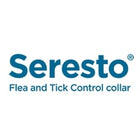Cats are naturally curious and independent but remain vulnerable to external threats like fleas and ticks. These blood-feeding pests can attack at any time, causing everything from minor irritations to severe, life-threatening conditions. Protecting your beloved pet is essential, and choosing the right flea and tick treatment is key to that protection. This guide is designed to shed light on potential risks, present various treatment methods, and empower you to make well-informed choices that ensure your cat stays vibrant and content.
Understanding the Risks
Fleas and ticks are more than just minor annoyances—they can significantly impact your pet's health. When these parasites bite, they can trigger a range of health problems, including:
- Dermatitis and Allergies: Irritation and allergic reactions can leave your cat uncomfortable.
- Skin Infections: Repeated scratching may cause wounds that become infected.
- Itching and Discomfort: Persistent irritation affects your cat’s overall well-being.
- Anemia: Heavy infestations can lead to blood loss and weakness.
- Gastrointestinal Issues: Ingested parasites may disrupt your cat’s digestive system.
- Serious Diseases: Infections such as Lyme disease, Rocky Mountain Spotted Fever, and even paralysis can result from bites.
- Potential Fatalities: In extreme cases, these infestations can be life-threatening.
Understanding these risks highlights why preventive measures and effective treatments are so important.
Types of Treatments Available
There are several approaches to flea and tick control, each with its own benefits:
Applied directly to your cat’s skin, these products work by repelling or killing parasites upon contact. They are popular due to their ease of use and effectiveness.
Available as pills or chewables, these treatments are absorbed into the bloodstream, offering systemic protection. They can be a great alternative if your cat resists topical applications.
Flea and tick collars provide continuous, long-lasting protection and are especially useful for cats that spend time outdoors or in high-risk environments.
Shampoos and Sprays:
These products offer immediate relief from infestations, though they are generally more suitable for short-term use or immediate control rather than long-term prevention.
Key Considerations When Choosing a Treatment
Selecting the best treatment for your cat involves several important factors:
Age and Weight:
Treatments vary based on your cat’s size and life stage. Always check the product guidelines to ensure suitability.
Local Climate and Environment:
The prevalence of specific flea and tick species can vary by region. Knowing your local environment helps you choose a treatment that targets the parasites most likely to affect your cat.
Lifestyle:
Whether your cat is an indoor companion or an adventurous outdoor explorer, their lifestyle plays a role in selecting the most appropriate treatment.
Health and Medical History:
Consider any pre-existing conditions or previous reactions to treatments. Consulting with your veterinarian can provide clarity and help tailor the right solution for your cat.
Safety Considerations:
Some treatments may not be suitable for pregnant, nursing, or breeding cats. It’s crucial to prioritize safe products specifically formulated for felines.
Method of Administration:
Choose a treatment that aligns with your cat’s temperament and your own convenience—whether that’s an oral medication, topical solution, collar, or spray.
Frequency of Use:
Some products require a monthly application, while others provide longer-lasting protection. Pick one that fits your lifestyle and schedule.
Tips for Application and Ongoing Care
Once you’ve selected a treatment, following proper application and maintenance procedures is key:
Read the Label:
Be sure to adhere to the product guidelines precisely to prevent incorrect application or any risk of overuse.
Monitor Your Cat:
After applying a new treatment, observe your cat for any signs of irritation or discomfort and report unusual reactions to your vet.
Regular Check-Ups:
Routine veterinary visits help ensure that any issues are caught early and that treatments remain effective.
Maintain a Clean Environment:
Regular cleaning of your home and your cat’s bedding reduces the risk of re-infestation, keeping the environment parasite-free.
Popular Flea and Tick Treatments for Cats
Here are some trusted options favored by pet owners and veterinarians alike:
A long-lasting topical treatment that protects against fleas, paralysis ticks, and brown dog ticks.
A broad-spectrum monthly treatment that not only wards off fleas but also protects against roundworms, hookworms, ear mites, heartworm disease, and paralysis ticks.
Known for its fast-acting formula, this topical treatment treats and effectively prevents flea infestations.
Offers rapid protection against multiple parasites, including fleas, paralysis ticks, brown dog ticks, biting lice, and sarcoptic mange.
An 8-month solution that continuously safeguards your cat from fleas and paralysis ticks while also helping to manage flea allergy dermatitis and reduce the risk of flea tapeworm transmission.
Final Thoughts
Finding the ideal flea and tick solution for your cat can be simple. By assessing potential risks and considering factors like your cat’s age, surroundings, habits, and health history, you can make a well-informed choice to keep your pet safe and comfortable. Always consult your veterinarian to select the best option tailored to your cat’s needs. Consistent prevention is essential for a happy, healthy feline.












